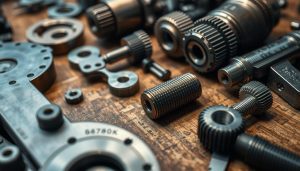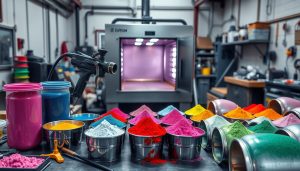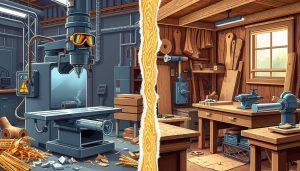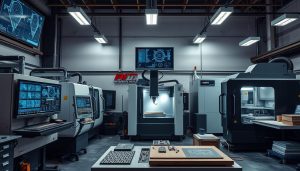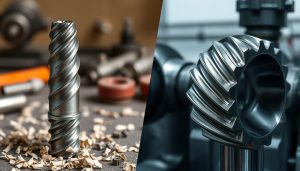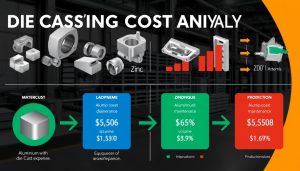As manufacturers strive to remain competitive, reducing the costs associated with sheet metal fabrication has become a top priority. In this article, we’ll explore practical strategies that can help you optimize your production processes and minimize expenses without compromising quality. From design simplification and material selection to process optimization and labor-saving techniques, we’ll uncover a range of solutions to enhance your cost-effective sheet metal fabrication.
Simplify Your Design to Reduce Costs
When it comes to sheet metal fabrication, simplifying your design can have a significant impact on reducing costs. By avoiding complex features and opting for standard geometries and shapes, you can streamline the manufacturing process and unlock cost-efficient sheet metal designs.
Avoid Complex Features and Designs
Complex features and intricate designs often require specialized tooling, additional labor, and more time-consuming processes. By simplifying your design and focusing on essential elements, you can minimize the need for complex machining and secondary operations, ultimately lowering the overall fabrication costs.
Use Standard Geometries and Shapes
Incorporating standard geometries and shapes into your sheet metal design can greatly benefit the cost-efficiency of the fabrication process. Leveraging common shapes, such as rectangles, circles, and triangles, allows for the use of off-the-shelf tools and reduces the need for custom-made components, resulting in significant cost savings.
Design for Manufacturability (DFM)
Embracing the principles of Design for Manufacturability (DFM) is a proven strategy for simplifying sheet metal designs and reducing costs. By considering the manufacturing capabilities and constraints upfront, you can optimize your design to minimize complexity, streamline production, and ultimately lower the overall fabrication expenses.
“Simplifying your sheet metal design is a surefire way to unlock cost-efficient fabrication. By focusing on standard geometries and embracing DFM principles, you can minimize complexity and streamline the manufacturing process.”
By embracing design simplification, you can unlock significant cost savings in sheet metal fabrication. Remember, the key is to focus on essential features, leverage standard shapes, and apply DFM principles to create cost-efficient sheet metal designs.
Choose the Right Materials for Cost Savings
Selecting the optimal materials for your sheet metal fabrication project can have a significant impact on your overall costs. By choosing cost-effective sheet metal materials and considering factors like material thickness, you can achieve remarkable savings while maintaining the desired performance and quality.
Select Standard Sheet Metal Gauges
Opting for standard sheet metal gauges, rather than custom or specialized sizes, can be a cost-effective approach. Standard gauges are widely available, often at lower prices, and can simplify the fabrication process. This streamlined approach helps reduce material waste and minimizes the need for complex, time-consuming adjustments.
Opt for Common Alloys and Materials
When it comes to optimal material selection, choosing common alloys and materials can be advantageous. Popular options like aluminum, mild steel, and stainless steel are readily available, with a well-established supply chain and competitive pricing. Avoiding exotic or niche materials can help you keep your costs in check without compromising the functionality of your sheet metal components.
Consider the Material Thickness Based on Design
Carefully evaluating the material thickness required for your design is crucial for cost-effectiveness. While thicker materials may provide enhanced durability, they may not always be necessary. Assess your specific requirements and choose the minimum thickness that can meet the performance needs, as this can result in significant savings on material costs.
“Selecting the right materials and thickness for your sheet metal fabrication project can make a substantial difference in your overall costs.”
By leveraging standard sheet metal gauges, common alloys and materials, and optimizing material thickness based on your design requirements, you can achieve cost-effective sheet metal fabrication without compromising quality or performance.
Minimize Tight Tolerances and Complex Machining
In the world of sheet metal fabrication, optimizing tolerances and reducing complex machining can lead to significant cost savings. By implementing looser tolerances where possible and minimizing the need for secondary operations, manufacturers can streamline the fabrication process and enhance efficiency.
Use Looser Tolerances for Easier Manufacturing
Tight tolerance optimization can often drive up the cost of sheet metal fabrication. In many cases, looser tolerances can achieve the desired performance without the added expense of extremely precise machining. By carefully evaluating the required tolerances for each component, fabricators can identify opportunities to relax specifications and simplify the manufacturing process.
Reduce the Need for Secondary Operations
Complex machining, such as intricate CNC cutting or specialized finishing techniques, can significantly increase the cost of sheet metal fabrication. By designing parts with efficient machining processes in mind, manufacturers can reduce the need for secondary operations and streamline the overall workflow. This can involve selecting standard geometries, optimizing part geometries, and leveraging the inherent capabilities of the fabrication equipment.
| Technique | Potential Cost Savings |
|---|---|
| Implementing Looser Tolerances | Up to 20% reduction in fabrication costs |
| Minimizing Secondary Operations | 10-15% reduction in labor and processing time |
By adopting these strategies, sheet metal fabricators can optimize their processes, streamline production, and ultimately deliver more cost-effective solutions to their clients.

Optimize Bending and Forming Processes
Efficient bending and forming techniques are crucial for reducing sheet metal fabrication costs. By focusing on simple angled bends and leveraging larger radii, manufacturers can minimize tooling expenses and improve production efficiency.
Design for Simple Angled Bends
When designing sheet metal components, opt for simple angled bends over complex geometries. Straightforward bends are not only easier to execute but also require less specialized tooling, ultimately lowering the overall fabrication costs. By avoiding intricate shapes and focusing on basic angles, businesses can streamline their efficient bending techniques and enhance their cost-effectiveness.
Use Larger Radii to Minimize Tooling Costs
Another way to optimize bending and forming processes is to incorporate larger radii into the design. Tight bends often necessitate specialized, customized tooling, which can significantly increase the fabrication expenses. By leveraging larger radii, manufacturers can utilize more standard, off-the-shelf tools, reducing the overall tooling costs and enabling more cost-effective forming processes.

“Simplifying the design and opting for larger radii can go a long way in lowering sheet metal fabrication costs without compromising the functionality or quality of the final product.”
By embracing these strategies, businesses can streamline their bending and forming processes, leading to substantial cost savings and improved overall efficiency in sheet metal fabrication.
Reduce Labor and Finishing Time
Minimizing labor and finishing time is crucial for cutting sheet metal fabrication costs. By leveraging the advantages of automated processes, manufacturers can achieve greater consistency in their operations, ultimately leading to enhanced efficiency and cost savings.
Use Automated Processes for Consistency
Automating various fabrication tasks, such as cutting, bending, and welding, can significantly reduce the need for manual labor. Automated systems ensure precise, repeatable results, minimizing the risk of costly errors and rework. This not only streamlines the production process but also enables manufacturers to maintain a high level of quality control throughout the fabrication lifecycle.
Consider Pre-Finished Materials to Cut Post-Fabrication Costs
Opting for pre-finished materials, such as coated or painted sheets, can help manufacturers cut down on post-fabrication finishing costs. These materials arrive ready for assembly, eliminating the need for additional painting, coating, or other finishing steps. This approach not only saves time but also reduces the overall labor requirements, leading to substantial cost savings throughout the production cycle.
